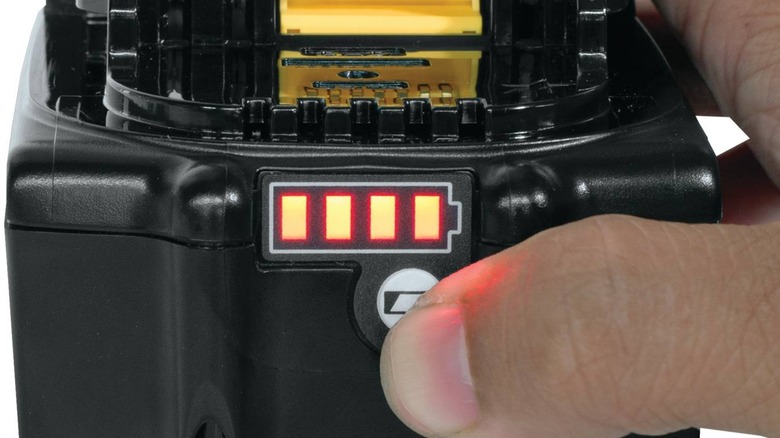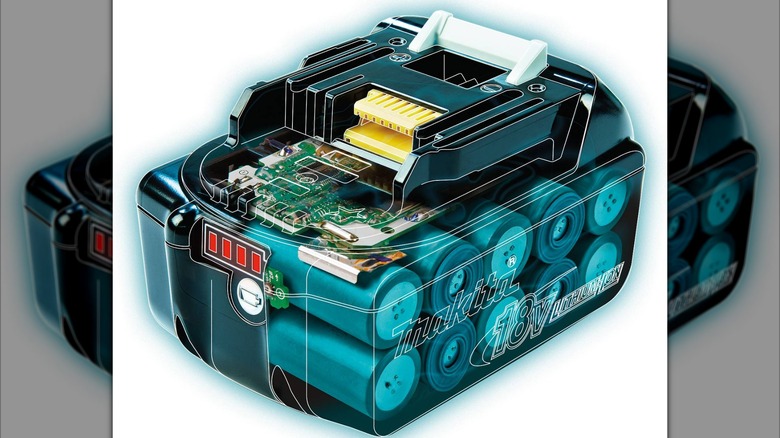Why You Should Never Fully Discharge Makita Batteries Before Recharging Them
Traditional logic dictates that, if you have a rechargeable battery, the sensible thing to do is to use the battery's charge in its entirety before placing it back on the charger to refuel. While this isn't an unreasonable assumption to make, however, following this practice with certain kinds of batteries may end up being to your detriment.
Take, for example, the various rechargeable battery packs utilized by Makita's many power tools. You might think something as rugged as a power tool battery would be just fine to completely exhaust its charge, but in fact, Makita itself explicitly recommends against this in its customer FAQ and battery care guide. The reason you shouldn't fully discharge a Makita battery before recharging it is that, in the process of fully discharging that battery, you're essentially forcing it to run on near empty for an extended period of time. This puts intense stress on the battery's internal components, diminishing the battery's overall lifespan and forcing you to replace it sooner than you'd probably prefer.
Forcing a battery to run near-empty stresses its components
A common misconception about rechargeable battery packs is that their means of storing power is kind of like a glass of water. You pour all the water out of the glass, then you just add some more and repeat. However, rather than a glass of water, a battery pack, including those utilized by Makita, is more like a little car engine.
These lithium-ion battery packs don't just pour energy into an attached tool; they deliver it in a carefully optimized manner. Power is drawn from the internal Li-ion cells, and the onboard system directs the flow into the attached tool's receiver. It's similar to how your car's engine receives fuel to power its pistons and deliver energy to the other moving components.
Here's where the problem with deep discharging arises: a Makita battery's internal systems are designed to regulate a very specific amount of energy. When that energy starts to run dry, the system needs to work twice as hard to direct whatever's left over into an attached tool, trying desperately to wrestle the degree of performance it's programmed to deliver out of a proverbial dry well. This process puts a lot of strain on the battery pack's internal components, which incur the kind of wear that could normally take much longer to develop naturally, not unlike a car running from zero miles to empty.
All this is to say that if your Makita battery starts to run low on energy, around 20-30% of its full capacity, don't try to force it. Just put it on the charger and let it rest, though you also shouldn't leave Makita batteries on the charger too long either.

